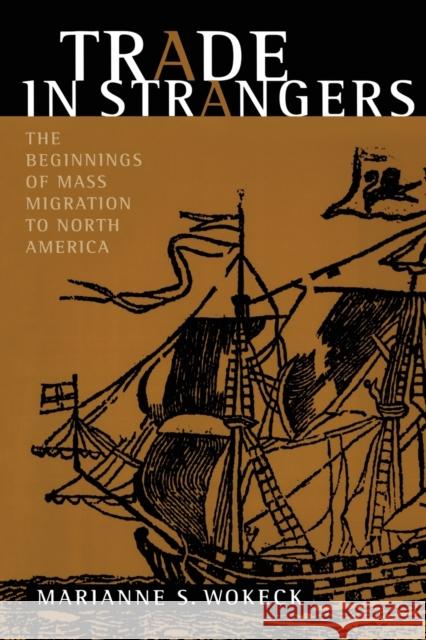Trade in Strangers: The Beginnings of Mass Migration to North America » książka
Trade in Strangers: The Beginnings of Mass Migration to North America
ISBN-13: 9780271018331 / Angielski / Miękka / 1999 / 352 str.
Trade in Strangers: The Beginnings of Mass Migration to North America
ISBN-13: 9780271018331 / Angielski / Miękka / 1999 / 352 str.
(netto: 148,12 VAT: 5%)
Najniższa cena z 30 dni: 154,26
ok. 30 dni roboczych
Bez gwarancji dostawy przed świętami
Darmowa dostawa!
American historians have long been fascinated by the "peopling" of North America in the seventeenth century. Who were the immigrants, and how and why did they make their way across the ocean? Most of the attention, however, has been devoted to British immigrants who came as free people or as indentured servants (primarily to New England and the Chesapeake) and to Africans who were forced to come as slaves. Trade in Strangers focuses on the eighteenth century, when new immigrants began to flood the colonies at an unprecedented rate. Most of these immigrants were German and Irish, and they were coming primarily to the middle colonies via an increasingly sophisticated form of transport.Wokeck shows how first the German system of immigration, and then the Irish system, evolved from earlier, haphazard forms into modern mass transoceanic migration. At the center of this development were merchants on both sides of the Atlantic who organized a business that enabled them to make profitable use of underutilized cargo space on ships bound from Europe to the British North American colonies. This trade offered German and Irish immigrants transatlantic passage on terms that allowed even people of little and modest means to pursue opportunities that beckoned in the New World.Trade in Strangers fills an important gap in our knowledge of America's immigration history. The eighteenth-century changes established a model for the better-known mass migrations of the nineteenth and twentieth centuries, which drew wave after wave of Europeans to the New World in the hope of making a better life than the one they left behind--a story that is familiar to most modern Americans.
American historians have long been fascinated by the "peopling" of North America in the seventeenth century. Who were the immigrants, and how and why did they make their way across the ocean? Most of the attention, however, has been devoted to British immigrants who came as free people or as indentured servants (primarily to New England and the Chesapeake) and to Africans who were forced to come as slaves. Trade in Strangers focuses on the eighteenth century, when new immigrants began to flood the colonies at an unprecedented rate. Most of these immigrants were German and Irish, and they were coming primarily to the middle colonies via an increasingly sophisticated form of transport.Wokeck shows how first the German system of immigration, and then the Irish system, evolved from earlier, haphazard forms into modern mass transoceanic migration. At the center of this development were merchants on both sides of the Atlantic who organized a business that enabled them to make profitable use of underutilized cargo space on ships bound from Europe to the British North American colonies. This trade offered German and Irish immigrants transatlantic passage on terms that allowed even people of little and modest means to pursue opportunities that beckoned in the New World.Trade in Strangers fills an important gap in our knowledge of Americas immigration history. The eighteenth-century changes established a model for the better-known mass migrations of the nineteenth and twentieth centuries, which drew wave after wave of Europeans to the New World in the hope of making a better life than the one they left behind-a story that is familiar to most modern Americans.











